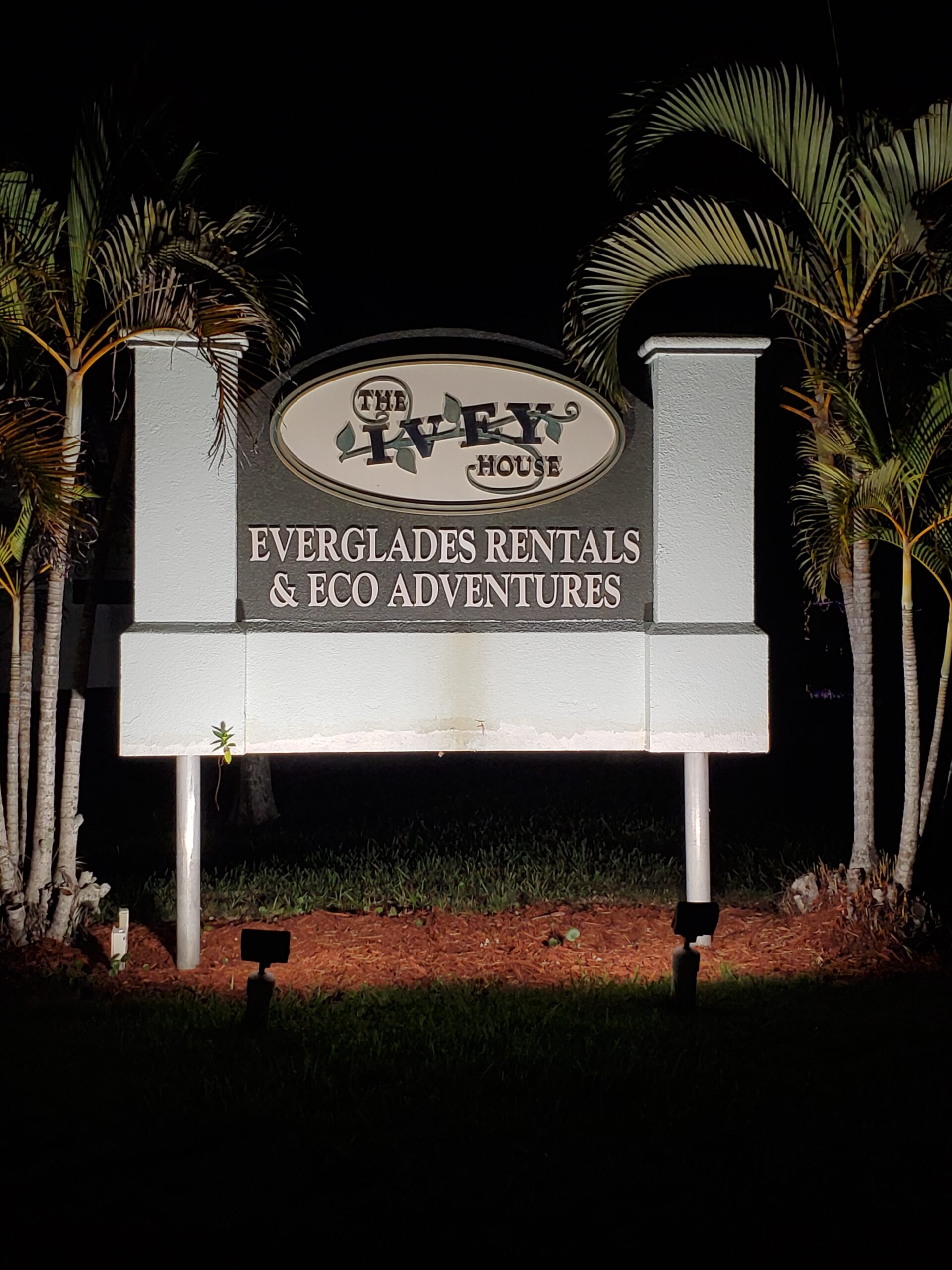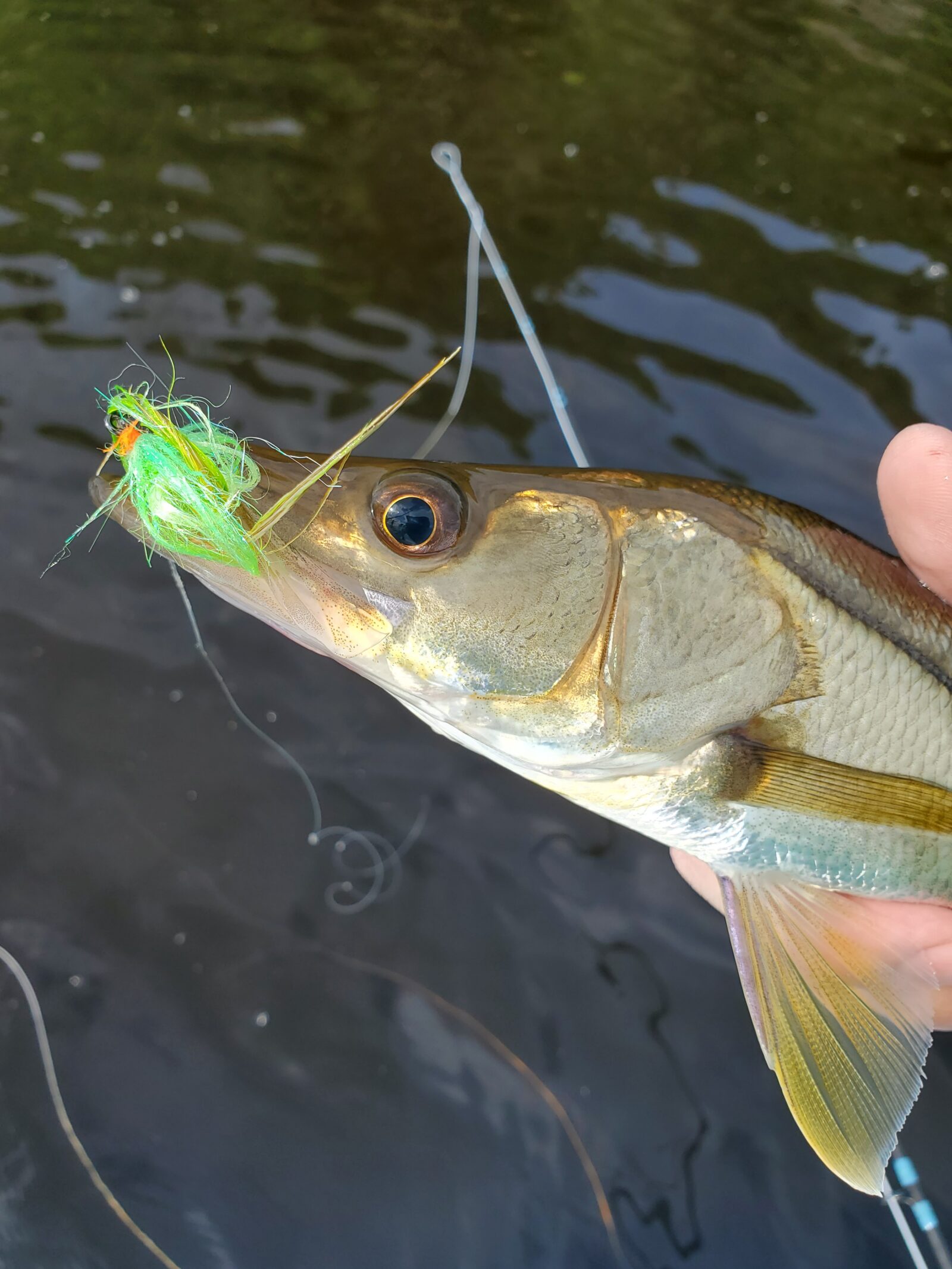As of the 2010 census, the population of Everglades City was 400 people. It sits right on the edge of the Everglades between the 10,000 Islands and Chokoloskee. It’s where the road ends so to speak, and the wilderness begins. I’ve fished here before and can honestly say, the fishing is incredible, especially for snook and tarpon.
Where to Stay in Everglades City
If you’re looking for luxury, this isn’t the place for you. This isn’t a fancy resort town, there are no beaches, this is a hardcore fishing town. Here about all you’ll find is a pizza shop, a breakfast place, city hall, a police station, a fire department, a handful of motels, Everglades Fishing Company (which is a gas station, restaurant and bait and tackle store all in one), a few trailers and houses – that’s about it.
We stayed at the Ivey House. The rooms were clean, the beds were comfortable and the facility itself has been recently updated. Amenities are limited, there is a pool, but there is no breakfast and the office closes at 8 p.m. Again, this is far from luxury, but if you want a clean and comfortable place to stay in town, this is a great bet.

On the Water Early
We fished out of Glades Haven Marina with Captain Connor McNichols of Show and Tell Charters. Captain Connor grew up in Everglades City and learned to fish from his father, Captain Joe McNichols. He got his captain’s license at 18 and grew up around some of the best fishermen in the business like the legendary Ted Juracsik and Captain Jeff Legutki. In other words, the guy knows the Everglades and knows how to fish in a big way.

One thing of note that I should mention; mosquitos. Here you will experience the worst mosquitos anywhere around, they’re simply built differently. They laugh at your bug spray and will bite through multiple layers of clothing. Clouds of these menaces will literally chase you, they’re relentless. The solution is to use 100 percent DEET, you simply cannot exist as a human being outside, especially anywhere near the water at dawn or dusk.
The Game Plan
The plan was to look for tarpon rolling at sunrise, one of the best times to fish for them. Tarpon will blast topwater lures and flies in low light conditions like dawn and dusk, so we braved the mosquitos and headed into the Glades.
Unfortunately, the tarpon were being tarpon, that is, uncooperative. So we changed our plan of attack from topwater tarpon to working mangrove edges and structure for snook. Below you can see morning and mid-day vistas in the Everglades. Tarpon, snook and others lurk in the trees and below the surface.
¡Robalo!
Robalo, snook in English, are very similar to the largemouth bass. Snook, just like bass, hit hard, jump, are structure oriented and tend to ambush prey. Just as a bass angler would pitch baits to downed branches and points, so too did we. If you really wanted to put in the time, you could catch 100 snook in a day, each fly that sailed into a mangrove cut or underneath a mangrove bush was immediately assaulted by multiple snook. These tenacious linesiders made up for what they lacked in size with aggression. Below are two of the many snook that were brought to hand.
While we unfortunately didn’t catch any big snook, we had a ton of action all day long – a snook on the fly is a snook on the fly!
See You Later, Everglades City
After a long day in the River of Grass, it was time to embark on the 31/2 hour drive back home. It was unfortunate that the tarpon wouldn’t cooperate on this trip, but it was still a great day nonetheless. Any time that you can get out and experience one of the last truly wild places in Florida, you should count yourself lucky. If you enjoyed this piece, then perhaps you’d enjoy reading my last piece as well, “Tampa Bay Fishing Variety: Tarpon to Tailers”.
Until next time, tight lines.




